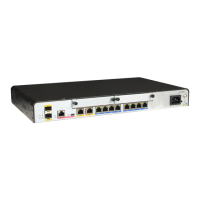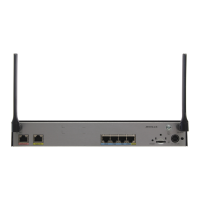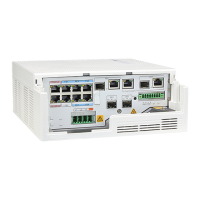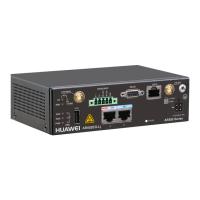l PE
An edge router that is located in an SP network. A PE is an edge device in the SP network
and is directly connected to the CE and MCE. In an MPLS network, PEs process all VPN
services.
l Provider (P)
A backbone router that is located in an SP network. A P device is not directly connected
to CEs. The P devices only need the basic MPLS forwarding capability, without
maintaining information about a VPN.
l Site
A group of IP systems with IP connectivity between each other. Their connectivity need
not be implemented through an SP network. The site is connected to the SP network through
a CE or an MCE.
2.1.2 MCE Functions Supported by the AR1200
When the AR1200 functions as an MCE, multiple routing protocols can be run between an MCE
and a PE, and between an MCE and a site, including static routes, the Routing Information
Protocol (RIP), the Open Shortest Path First (OSPF), the Intermediate System-to-Intermediate
System (IS-IS), and BGP.
Multiple Routing Protocols Run Between an MCE and a PE
When the AR1200 functions as an MCE, multiple routing protocols can be run between the
AR1200 and a PE, including:
l Static routes
l RIP
l OSPF
l IS-IS
l BGP
Multiple Routing Protocols Run Between an MCE and a Site
When the AR1200 functions as an MCE, multiple routing protocols can be run between the
AR1200 and a site, including:
l Static routes
l RIP
l OSPF
l IS-IS
l BGP
2.2 Configuring a VPN Instance
This section describes how to configure a VPN instance.
Huawei AR1200 Series Enterprise Routers
Configuration Guide - VPN 2 MCE Configuration
Issue 01 (2012-04-20) Huawei Proprietary and Confidential
Copyright © Huawei Technologies Co., Ltd.
43

